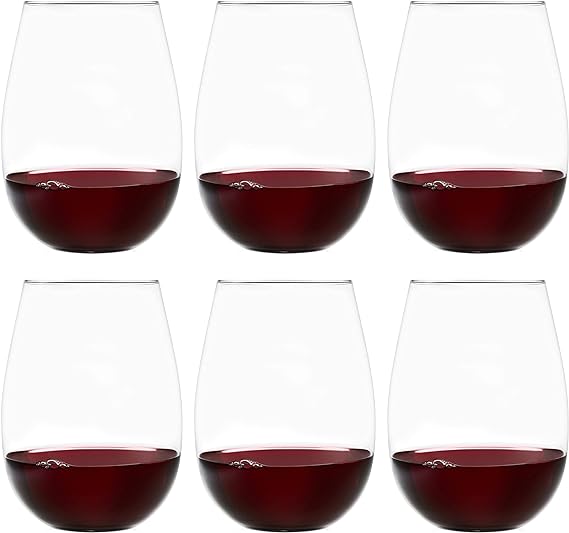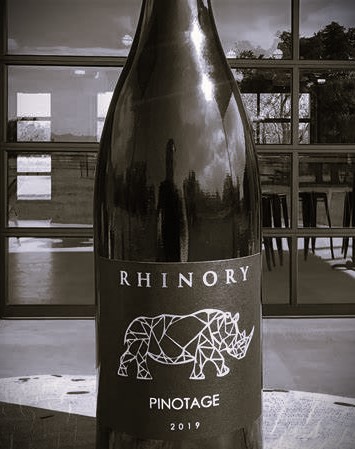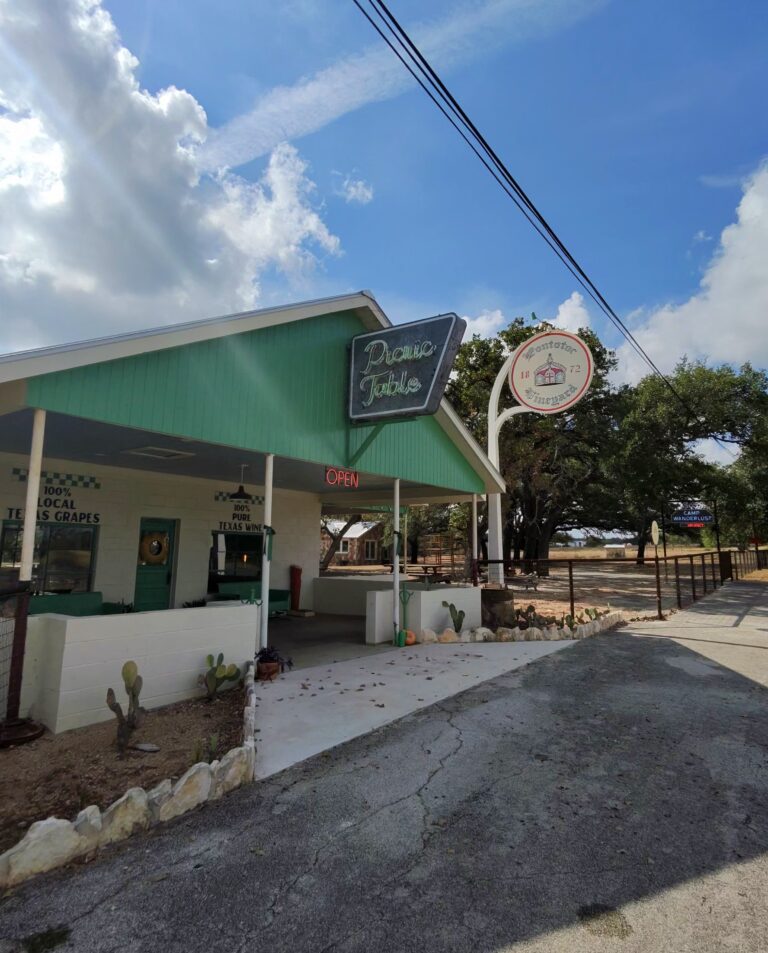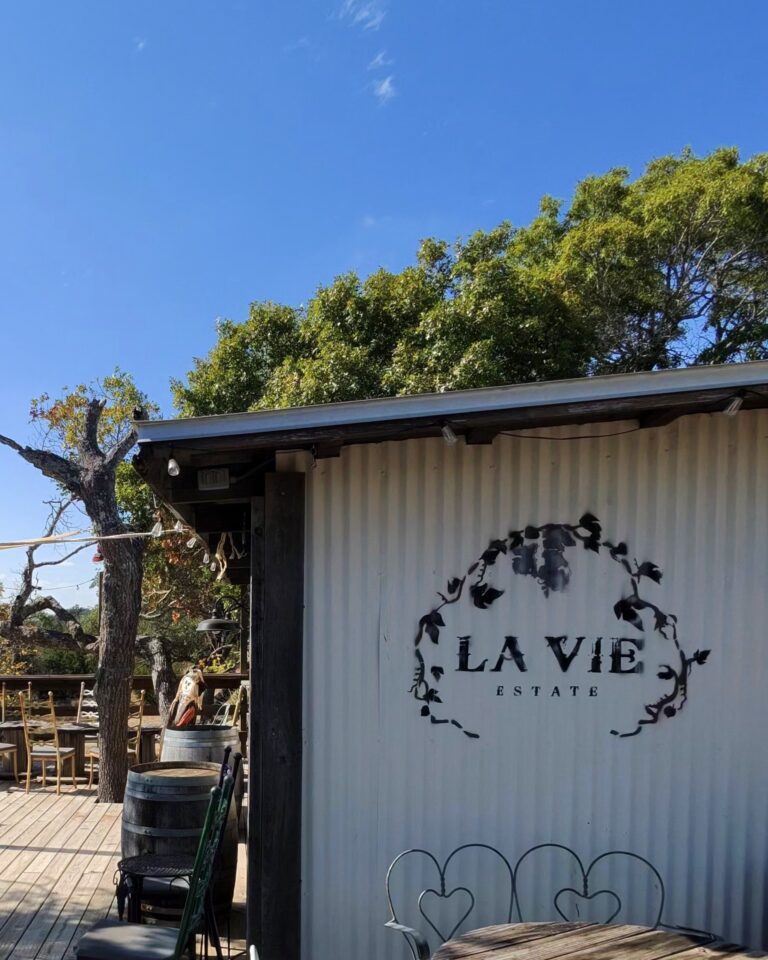Table of Contents
- Introduction
- History and Founders
- The Venue
- The Top 3 Wines you should try.
- Other wines offered.
- FAQ
1. Introduction
From the rolling hills of Tuscany to the sprawling vineyards of Napa Valley, wine lovers like me have traveled far and wide in pursuit of that perfect sip. Yet, in the heart of the United States, Texas – a state known for many things – is carving a unique and illustrious niche in the world of wines. Within this rapidly burgeoning Texas wine scene, a newcomer to the Texas Hill Country wine region, “The Rhinory” (https://rhinory.com) stands out as a paragon of excellence. During my frequent travels to the Texas Hill Country wineries, I only recently noticed the rhino statue and the name of this winery on the entry off Highway 290 but did not give it much thought. I guess my first thought was it was a bit gimmicky for my taste even though it sounded like something I would come up with given my sometimes off sense of humor. So, I passed it by a few more times until I met a couple at a wine event who explained it for me and had nothing but good things to say about the venue. That sealed it for me, and I decided to stop there on my next trip and check it out for myself. In this detailed review, I aim to shed light on why this winery is a touchstone for anyone wanting to savor the true essence of Texas wines.
What makes The Rhinory Different?
Blake, the Rhinoceros of course!
2. History and Founders
Diving into the past, The Rhinory is not just another commercial endeavor. It’s a love story of sorts. A love for the land of Texas and an unyielding passion for viticulture. Craig Stevens and his wife were not ordinary Texans. On a safari trip to South Africa, they stumbled upon what they felt was an injustice to the wildlife, witnessing the poaching of some of the world’s most beloved wildlife. Their vision was clear – to create a winery that would elevate the profile of Texas wines on the global stage, and at the same time, give back to the world by supporting the rhinoceros population. And thus, The Rhinory was born.
In the vast grasslands of Africa, the mighty rhinoceros, characterized by its thick, protective skin and iconic horn, plays a pivotal role in maintaining the ecological balance. Once roaming in great numbers, the rhino has faced considerable threats from poachers seeking its horn for traditional medicine and as a status symbol, leading to the tragic decline of some species to the brink of extinction. Efforts by conservationists, including anti-poaching units and sanctuary initiatives, have been instrumental in protecting these majestic creatures, fostering hope that with continued dedication, rhinos can thrive again in their natural habitats.

While tasting some of their wonderful wines served up by one of the best wine servers I have ever had (his name is Dale), myself and my entourage spent quite a bit of time conversing with Christine Bobko ( the Rhino Program Manager) rhinos around the world, what they are doing at Rhinory to help this endangered species, and of course, Blake, the lone 4,000 pound rhino at the Rhinory at the moment. I mentioned my entourage, but didn’t mention they are from South Africa, a home of the white rhinos, and both have history with rhinos. So, you can imagine our lively discussion on the topic of rhinos.
3. The Venue
The tasting room is not overlay large, with room for seating around the bar for tasting or drinking. There are also several tables available indoors as well as a wine bar service and tables on the outdoor patio. Additionally, there is seating under some beautiful shade trees near the rhino pasture with wooden picnic tables if you like the outdoors and the weather suits you. This is a perfect spot if you want to sip wine and investigate Blake in the rhino pasture.

Elegant European-Made,100% Lead-Free Crystalline Stemless Wine Glasses
If you choose to remain in the tasting room, make sure you look around for thematic offerings enhancing your presence among the rhino and its native country. For example, biltong. Jerky and biltong are both dried meats, but they originate from diverse cultures and have distinct preparation and flavor profiles. Jerky, native to North America, is typically made from lean meat that’s been trimmed of fat, marinated in a seasoned liquid mixture, and then dried or smoked. It often has a smoky or sweet flavor, depending on the marinade. Biltong, on the other hand, hails from South Africa and is made from larger cuts of meat, often including some fat. It is cured using simple ingredients like vinegar, salt, and spices, then air-dried without the use of heat. Biltong typically has a more robust and tangier flavor compared to jerky. Biltong is also typically easier to eat and less like a piece of leather like jerky!
Inside, the tasting room boasts lofty ceilings with wooden beams and floor-to-ceiling windows that flood the space with natural light. It is a wonderfully comfortable space providing an unrivaled backdrop for sipping and savoring Texas wines. Speaking of wine, let’s get to the wines!
4. The Wines
There are two classes of wines at the Rhinory, easily distinguishable by the two tasting menus. The first, the “Reserve Menu”, is their wines most in the public would navigate towards. At the time of my tasting, it featured a 2021 Marsanne, 2022 Chardonnay, 2021 Rosé, 2021 Shiraz, and a 2020 Cabernet Sauvignon. This tasting is $30.

The second flight, the “Kera’s Menu”, is comprised of more expensive wines, only sharing Cabernet Sauvignon with the Reserve menu (but the cabs are different). Keras’ menu consisted of NV Wijde Brut Sparkling wine, 2022 Picpoul Blanc, 2022 Chenin Blanc, 2020 Cabernet Franc, and a 2018 Cabernet Sauvignon. This tasting is $50.
What you will notice on the menu are little maps depicting where the wines are made. Unlike some of the other wineries reviewed, the Rhinory offers both Texas and South African wines. On the Reserve Menu, there are two Texas wines: the Marsanne and the Shiraz. The others are from South Africa. On Kera’s menu, only the Picpoul Blanc is from Texas. Given we are all about Texas wines here, I’ll talk about the Texas and South African wines but focus on the Texas offerings.
The Texas Offerings
2021 Marsanne: Marsanne can be quite varied depending on its age and how it’s made, but there are several characteristic notes and elements that define its taste profile, and they come out in this one. This one has its hints of lemon and lime, with a slight buttery undertone. Overall, genuinely nice. I have one in my wine cellar now.
2021 Rosé: Let me state up front I am not a huge fan of Rosé although I have tasted several that are nice on a sweltering summer day. This one is the nicest one I’ve ever had. They let these sit a bit longer than usual, and it worked!
2022 Picpoul Blanc. While a genuinely nice wine, it really didn’t do that much for me. I felt it to be a bit more middle of the road for me. I didn’t pick up the nose and palate variations they described.
5. The South African Options
2020 Cabernet Franc. This one has a deep flavor to it, a muddy (I mean that in an effective way) flavor with a deep toasted flavor. An exceptional wine for pairing with a juicy steak (no rhino steaks, please!)
2018 Cabernet Sauvignon. This cab is the driest cab I’ve tasted in a long time. As Dale described it, it pulls the moisture right out of your mouth. And that it did. But the blackberry and pepper flavors were unmistakable and gave this wine a place of its own on the wine continuum. Added this one to my wine cellar too.

2019 Pinotage (not on any menu). A favorite of one of my South African partners in crime for the day, this is a special offering for wine club members only. Few cases were produced, and I highly recommend it.
6. FAQ
Q: What wine tastings are offered?
A: They have a comprehensive tasting experience with two options that lets you explore the full range of Texas and South African wines they produce. Tastings are $30 and $50 depending on which flight you choose.
Q: Are the wines produced in Texas?
A: Yes and No. There are both Texas produced and South African produced wines at the Rhinory.
Q: Can you purchase wines online from The Rhinory?
A: Certainly. But why would you want to when you can go there and support rhino conservation!
Q: Can you pet the rhino?
A: Absolutely. They offer some guided experiences to give you an up close and personal look at Blake the rhino. He is a calm and friendly sort. And smart too!
Conclusion
In wrapping up this review, it is evident that The Rhinory is more than just a winery. It’s an experience, a journey through the heart and soul of Texas and South African wines and a little bit of South Africa. Each bottle they produce tells a story of dedication, passion, and the indomitable Texan spirit, and some of the profits go directly towards the perseveration of rhinos around the world. So, whether you’re a seasoned oenophile or just starting your wine journey, The Rhinory promises an adventure worth remembering.
Ok, to go along with your amazing Rhino wine, you need to complete the experience with the appropriate glasses and accessories. Don’t diminish your experience! Check out some great options in the Liquid Lonestar Marketplace! (Disclaimer: As an Amazon associate, I earn from qualifying purchases. But make no mistake, I stick by my all my reviews and recommendations).
About the Author

A native of Texas, Ken “Texan” Pierce is a renowned alcohol aficionado with over 15 years of experience in the Texas wine, whiskey, and beer industry. With a vast number of alcohol production resources right in his back yard in the Texas Hill Country, Ken has made it his mission to promote and advance the Texas winemaking, distilling, and brewing industry across the country. His uncanny ability to identify tasting notes and pairings makes him a respected authority within alcohol enthusiast circles. When he’s not reviewing the latest craft spirits, you can find Ken playing his guitar, trying to sing, and sipping on a Texas libation.




